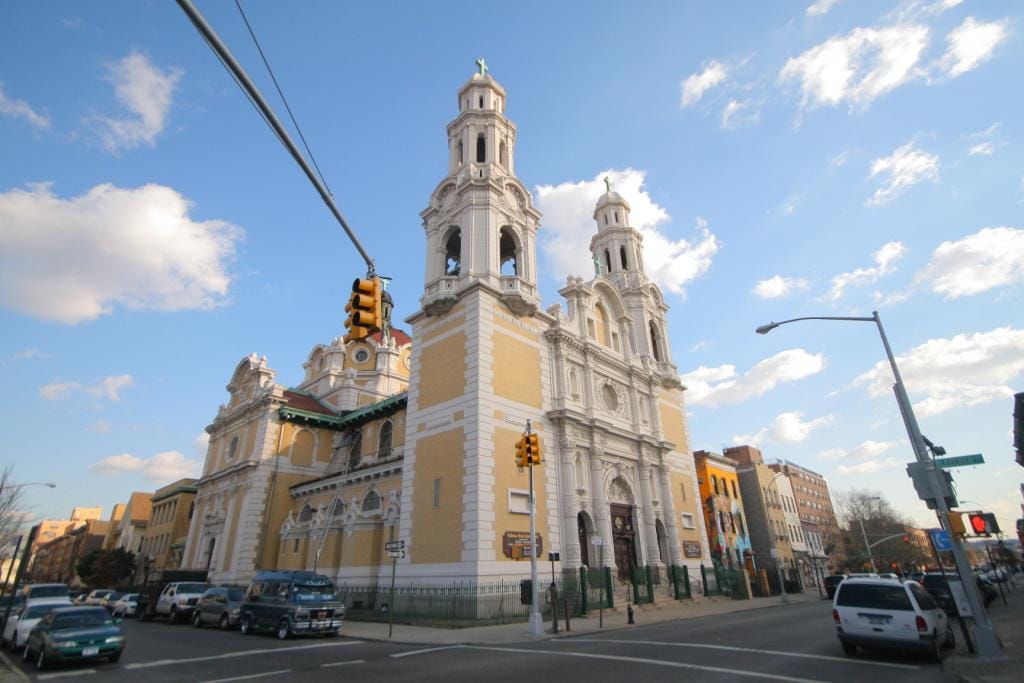Landmarks Preservation Commission Chair Resigns Following Opposition To Proposed Changes In Rules

The Chair of the NYC Landmarks Preservation Commission (LPC) announced her resignation on Thursday after serving four years in the role.

“I am honored to have served as Chair of the Landmarks Preservation Commission for the past four years and to have had the opportunity to serve the City for the past 28 years,” Meenakshi Srinivasan said in a statement. “I am proud of what we have accomplished—promoting equity, diversity, efficiency and transparency in all aspects of LPC’s work, and working with the administration to make preservation a critical part of the city’s planning process. It’s been an intense, challenging, and incredibly rewarding experience.”
The announcement of Srinivasan’s departure follows a March 27 public hearing in which the LPC proposed several changes to its application rules and a subsequent joint letter signed by the heads of nine preservationist organizations voicing their objections and requesting that the agency withdraw the proposed amendments.
The letter lists five specific concerns regarding the proposed changes to LPC’s rules:
- The overall diminution of pubic review of projects—estimated in the LPC’s presentation to be up to 20% of proposals which are currently brought to public hearing.
- Procedural incentives for the use of substitute and faux materials in restorative work.
- A broader allowance of more visible and larger additions to buildings.
- The new characterization of landmark properties which are deemed to be “not…building(s) for which the district was designated” and other administrative terminology with no basis in the Landmarks Law.
- A decision to organize the new rules by “work-types” without adequate consideration of the impact of standardization of the unique character of our diverse historic districts and individual landmarks.
“Any one of these concerns should be enough to cause this proposal to be re-examined. All five of them, echoed by design professionals, community groups, concerned neighbors and preservation experts speaks to fundamental flaws in the proposal,” the letter continues. “Rather than assurances, these changes to the Rules create more uncertainty for the public and bargain away the future of our landmark buildings to save time during the application process.”
“Chair Srinivasan focused on implementing broad city policy at the Landmarks Preservation Commission, working with property owners and stakeholders to help achieve the de Blasio Administration’s ambitious housing plan,” Executive Director of Historic Districts Council, Simeon Bankoff, one of the letter’s cosigners, told BKLYNER. “We look forward to the next Chair being more open to community-based concerns about New York’s historic neighborhoods.”
Lynn Ellsworth, the chairwoman of the Tribeca Trust, which educates the public about Tribeca’s history and architectural heritage, told the New York Times that Srinivasan has been “hostile to historic preservation” and often “sided with landlords and developers.” She added, “The commission has been overly biased toward the desires of the real estate industry for too long.”
Many argue that the proposed changes to the rules will give the commission too much control while decreasing public input and transparency in the landmark designating process. Council Speaker Corey Johnson and Manhattan Borough President Gale Brewer also sent the LPC a letter stating:
“The participation of the public adds value to our civic processes and, in the case of LPC, ensures that the commission’s determinations are based upon the best possible information. Contrary to the stated goals of the Statement of Basis and Purpose, the Proposed Rules will not increase transparency, but rather will reduce it. Under the Proposed Rules, there is no provision for any kind of public review of these delegated determinations,” the Times Ledger reported.
Srinivasan previously worked in the Manhattan Office of Department of City Planning, becoming its Deputy Director in 2000. From 2004 to 2014 she served as Chair of the Board of Standards and Appeals under the Bloomberg Administration and was appointed to the Landmarks Preservation Commission by Mayor de Blasio in 2014.
“At the helm of the City’s Landmarks Preservation Commission, she sliced through decades of regulatory red tape and modernized the commission,” de Blasio said in a statement. “We congratulate her and thank her for the important reforms she instituted, and we wish her well in her future pursuits.”
During Srinivasan’s time with the LPC, the agency has designated more than 3,800 buildings and sites across the city, including 67 individual landmarks, three interior landmarks, and nine historic districts.
The agency also tackled a decades-long backlog of properties, designating 27 sites across NYC long-awaited landmark status including Bushwick’s St. Barbara’s Roman Catholic Church at 138 Bleecker Street as well as 183-195 Broadway in Williamsburg. However, according to the New York Times, prior to this Srinivasan, shortly after joining LPC, suggested the agency clear the “backlog of nearly 100 proposed landmark cases off its books, without making a determination on their status,” and proposed to “eliminate” the longstanding cases “from consideration.”
An LPC spokesperson told the New York Times that criticism over the proposed rule changes was not behind Srinivasan’s decision to resign. Srinivasan’s last day with the LPC will be June 1. “I would love to do more hands-on project-based work related to land use planning and zoning and will be transitioning to the private sector,” she says. “I will be here over the next several weeks and intend to continue to work closely with my staff through this transition.”
The public comment period for the LPC rule changes is scheduled until Tuesday, May 8, however a date for the vote has not yet been determined, according to the New York Times.




